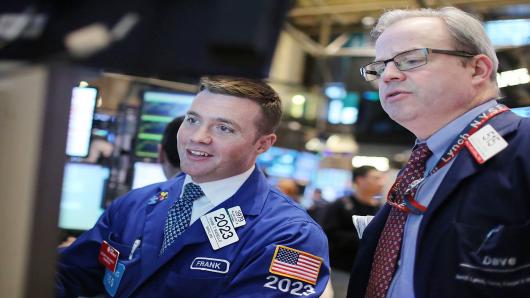Stocks have a little extra bragging room now over bonds: an earnings yield on the Standard & Poor's 500 that has just hit a 58-year high.
While the 5.4 percent earnings yield—the inverse of the price-to-earnings ratio—is still considerably below its historical average, the number is nearly triple the 1.9 percent yield of the 10-year Treasury note.
Investors use the yields generally and this ratio in particular to determine how much reward they are getting for their risk. A low S&P 500 earnings yield, then, would suggest a market that is at or approaching expensive levels.
(Read More: As Stocks Rally, Market Flooded With New Shares)
A high yield ratio, on the other hand, points to a reasonably priced stock market—a higher yield needed to lure more investors—and markets that have approached the current levels do well.
In the past, whenever the earnings per share yield doubled the Treasury yield, the market averaged a 12 percent gain over the next year, with gains coming 71 percent of the time, according to S&P Capital IQ. The average ratio post-World War II is 1.6 times, versus the current 2.8.





